
How an Australian writer rediscovered herself on the all-female, immersive Dilly Bag tour with the Yolngu people of the Northern Territory
- After eight years away, Rebecca Foreman returns home to Australia, and reconnects with herself on an all-female tour in the Northern Territory
- The Dilly Bag tour is run by First Nations women belonging to the Yolgnu people around the town of Nhulunbuy in Arnhem Land
I returned to Australia after eight years in Singapore and Bali, Indonesia – some of it Covid-19 enforced – landing with a heavy thud back to a changed society; never had I felt more untethered from my country of birth. Resisting the urge to bolt anywhere with a softer approach to the pandemic, my instincts told me that the answer to reconnecting to Australian soil lay within.
Perhaps the answer could be found on Lirrwi Tourism’s all-female, immersive Dilly Bag tour, which is run by women belonging to one of the oldest living cultures on Earth. The Yolngu, or Yolŋu, are an aggregation of First Nations people and the spiritual custodians of Arnhem Land, in Australia’s Northern Territory. Everything I’d read about this tour resonated with me, not least the spiritual meaning of the dilly bag: alongside food and medicine, it is used to carry knowledge.
Day 1
After a soul-sapping early rise for a 7am flight, our tour group – myself, a glass artist, a cattle farmer and her 12-year-old daughter, a retired art teacher and her geography teacher daughter – meets at Darwin Airport.

The Yolngu believe that the land is their mother, healing and guiding their lives, so I am keen to know what the torrential weather represents; a jealous in-law, perhaps?
After the rain delays take-off, we get airborne for the one-hour flight east, to Nhulunbuy. After circling Gove Airport, a break in the weather allows us to land, and we meet our guides for the next five days, Noella, a local Yolngu woman, and Rachel, from Texas, in the United States, who works for Lirrwi Tourism.
A trip to South Korea’s new Legoland resort and surrounding Chuncheon city
Their mutual ease sets the tone as they introduce us to Nhulunbuy (population just over 3,000), the largest town in East Arnhem Land and the business and services hub for the area.
It is a short drive in our 10-seater bus to the Roy Marika Lookout along flat, country roads. The roadside vegetation contrasts starkly with the surrounding rich red earth.
The lookout is at the summit of Nhulun (Mount Saunders), which the Yolgnu consider a sacred site and from which Nhulunbuy gets its name. A tower affords views of Gayŋaru Wetlands (Town Lagoon), Gove Harbour, the stunning coastline, Nhulunbuy township – and a Rio Tinto bauxite mine.
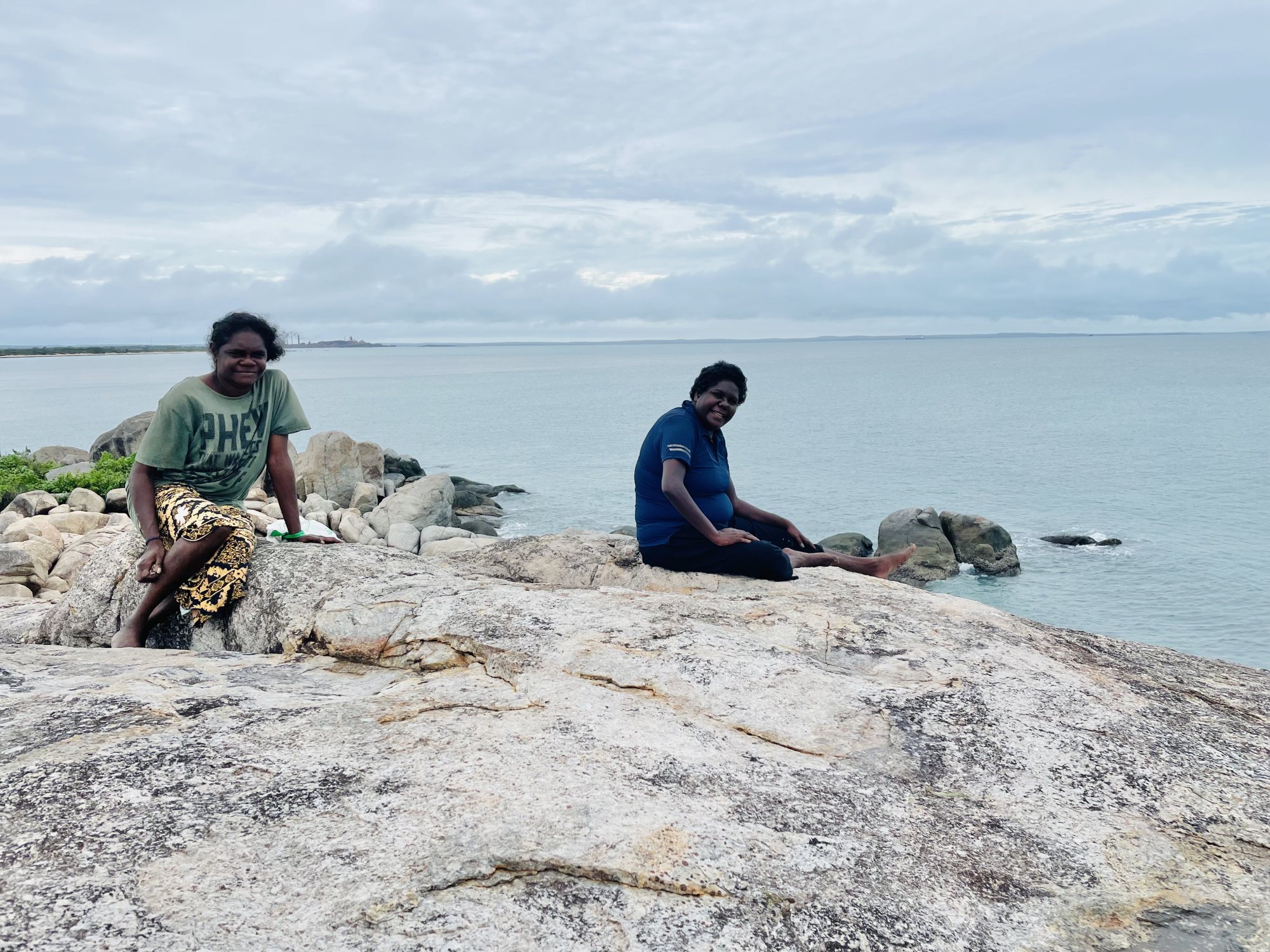
We begin munching on wraps for lunch, but the rain starts again, so we clamber back into the van and head southeast, towards the sacred sandstone Rainbow Cliffs (Banambarrnga). En route, our guides casually throw into the conversation that we need to be alert for crocodiles, a thriving species in the Northern Territory, protected since 1971. Due to the heavy rains, they are likely to lurk in shrub lands and will be hard to spot in the murky seawater. Swimming is ill-advised.
Suddenly, Noella instructs Rachel to stop the van and jumps out, running off into the bush in her flip-flops. She starts pulling something up from the ground. She returns with strands of a pandanus plant, which the Yolngu dry and dye to make the dilly bags.
Upon reaching Yirrkala, south of Nhulunbuy, we drop Noella off at her home, a modest single-storey house built of wood with tin roofing. We’re told it is not uncommon for a Yolngu family of 20 to inhabit a three-bedroom house, sharing everything. Women are responsible for the home so we must remain flexible around their family obligations. As the tiredness of our first day creeps in, we give a nod of understanding.
We were supposed to stay in camp-style accommodation but due to the torrential rain, we are put up at Nhulunbuy’s Walkabout Lodge, which is not such a disappointment given it has two restaurants, an outdoor pool, fantastic coffee and hot showers.
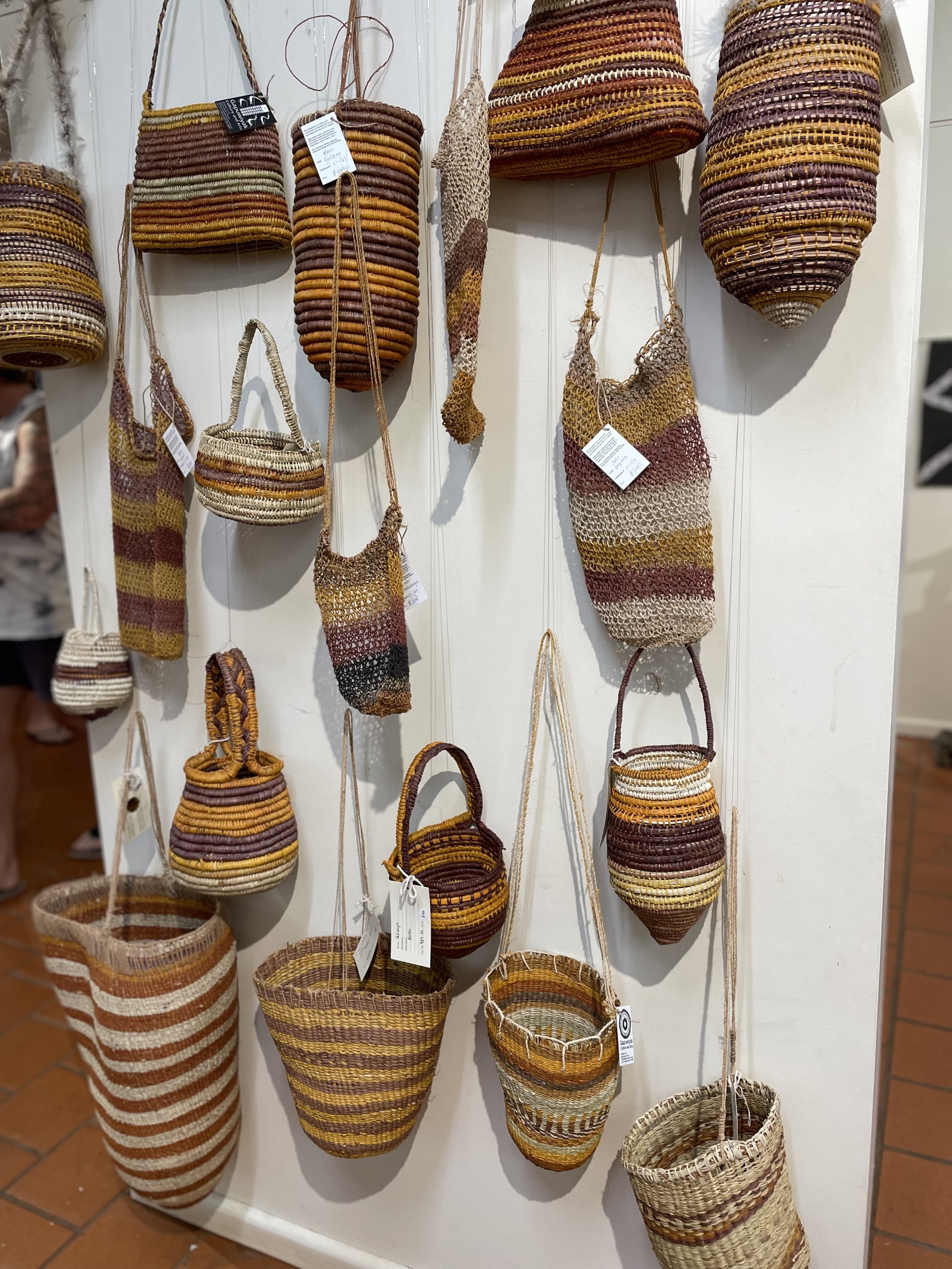
Day 2
This morning, we visit Yirrkala’s Buku-Larrnggay Mulka art centre, regarded as one of the best for Aboriginal art in Australia.
Inside what looks a bit like a primary school, hiding behind green bushy trees, are patterned ceremonial poles (larrakitj), weavings, jewellery and historical artefacts. A wall chart illustrates the Yolngu’s ancestral lineage through two moieties, or social groups – the Dhuwa and Yirritja – each having its own lands, language, totems and philosophies, both halves existing for balance. Also on display is a replica of the Yirrkala Church Panels, a drawing likened to the Bible and which cannot be photographed.
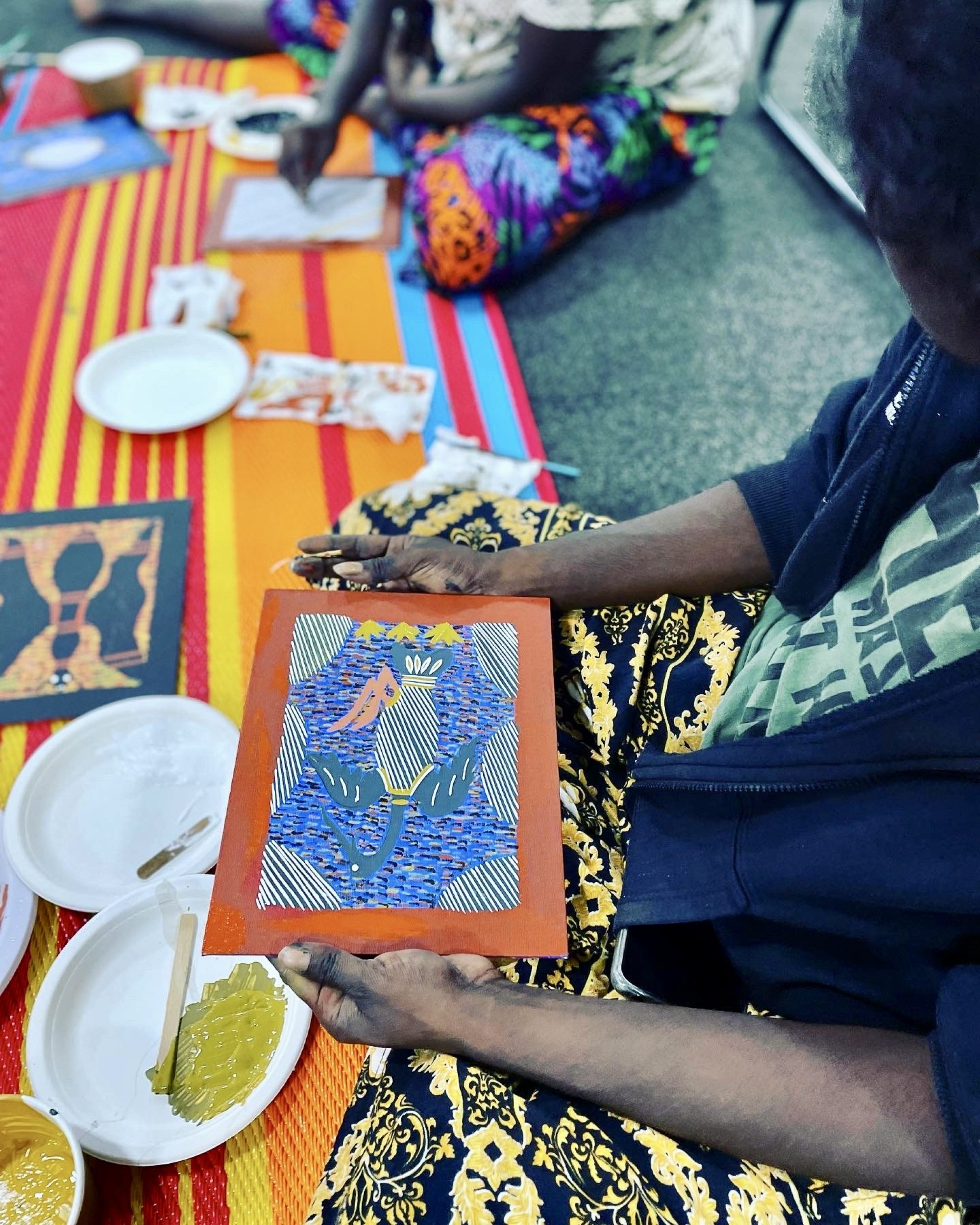
We are joined on the art centre veranda by members of Noella’s extended family. White-bearded Barayuwa invites us to listen to the droning rhythms of the yidaki (didgeridoo), which can be played only by specific men, according to strict protocol. We are encouraged to join the dance (bunggul) and mimic bird movements.
When the rain begins to bucket down again, we return to our lodge and the women gather in a circle to deliver a painting and basket-weaving tutorial. Charmaine, a cousin of Noella, steers my painting group, giving us a choice of totems based on our feelings. The turtle features highly as a totem in Yolngu art, as it is said to support the world.
Charmaine and her sisters were raised by their uncle, Barayuwa, while their mother worked in Darwin. She realises how unusual this arrangement is in Yolngu culture but says she feels privileged to have had such an upbringing.
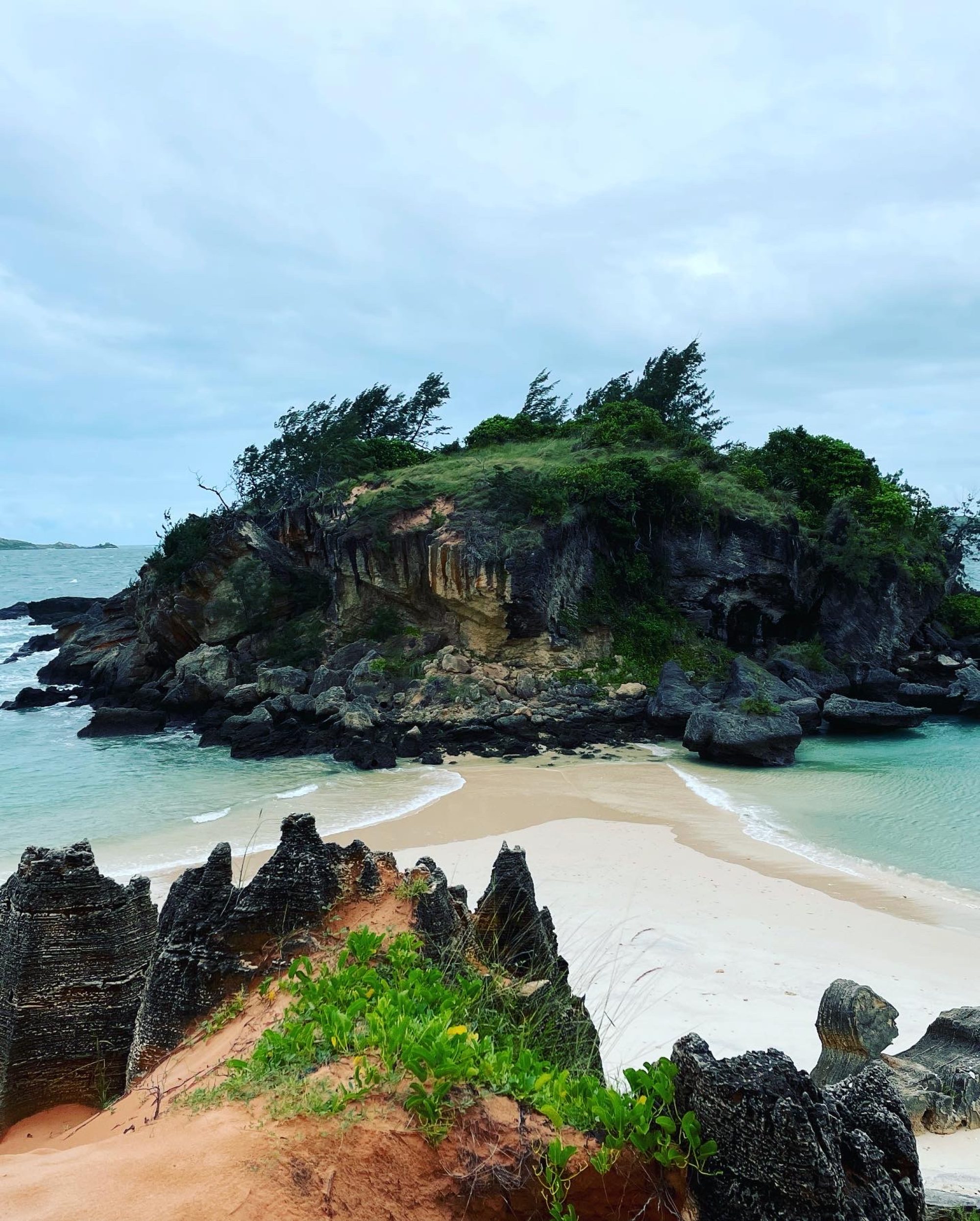
Day 3
Rains notwithstanding, Noella and Rachel lead us out on a tour of the Bawaka Homeland, a stretch of beach on the east coast of East Arnhem Land with views of the Gulf of Carpentaria. It is considered the traditional homeland of the Yolngu.
“In this weather, we must always travel in four-wheel-drive pairs, in case we get bogged – but don’t worry we have a winch,” Rachel says, as we slosh along flooded roads, occasionally stopping to gather more pandanus leaves.
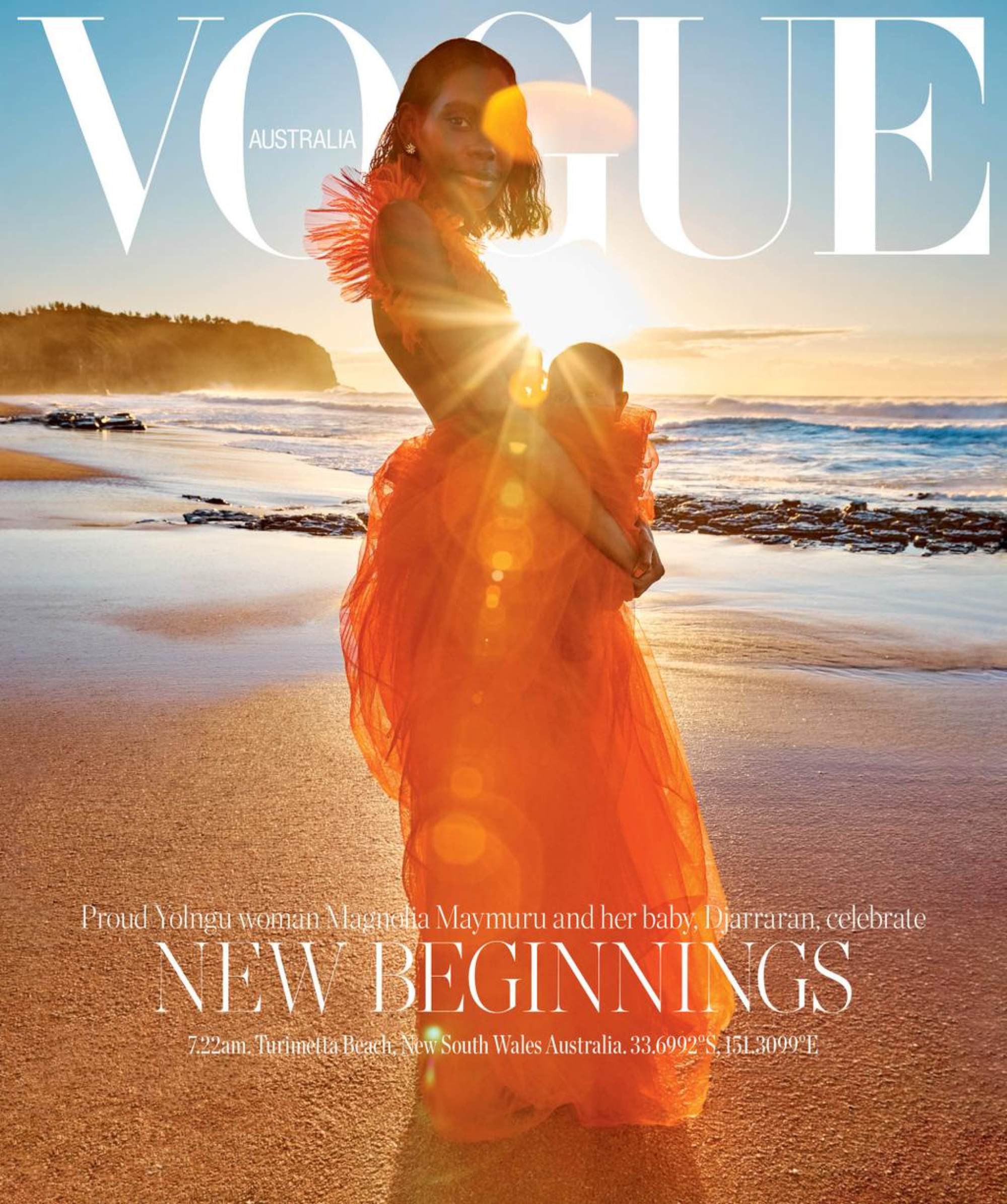
At Port Bradshaw beach we pull up alongside a group of men spearfishing from the water’s edge. We learn that one of them is married to a famous Yolngu model, Magnolia, who recently appeared on the cover of Vogue Australia. He graciously shares his catch with us and Noella promptly cooks his gift on a bark fire that appears from nowhere.
We drive on to Lonely Beach, two stretches of sand that meet at a rocky island and often feature in best Australian beaches listicles. Noella and Rachel stand at the top of a dune, next to our four-wheel-drives, and survey the beach below. They give us the green light to swim in what is known as the Arafura Sea, but it’s not entirely enjoyable; my thoughts are consumed by crocodiles.
Returning to the lodge, we negotiate massive craters resembling small lakes where the road has been washed away by the rain. With healthy run-ups and luck, our convoy ploughs through – until we don’t, and one of the vehicles gets bogged in black smelly sludge, sinking deeper with each press of the accelerator. The winch proves its worth.
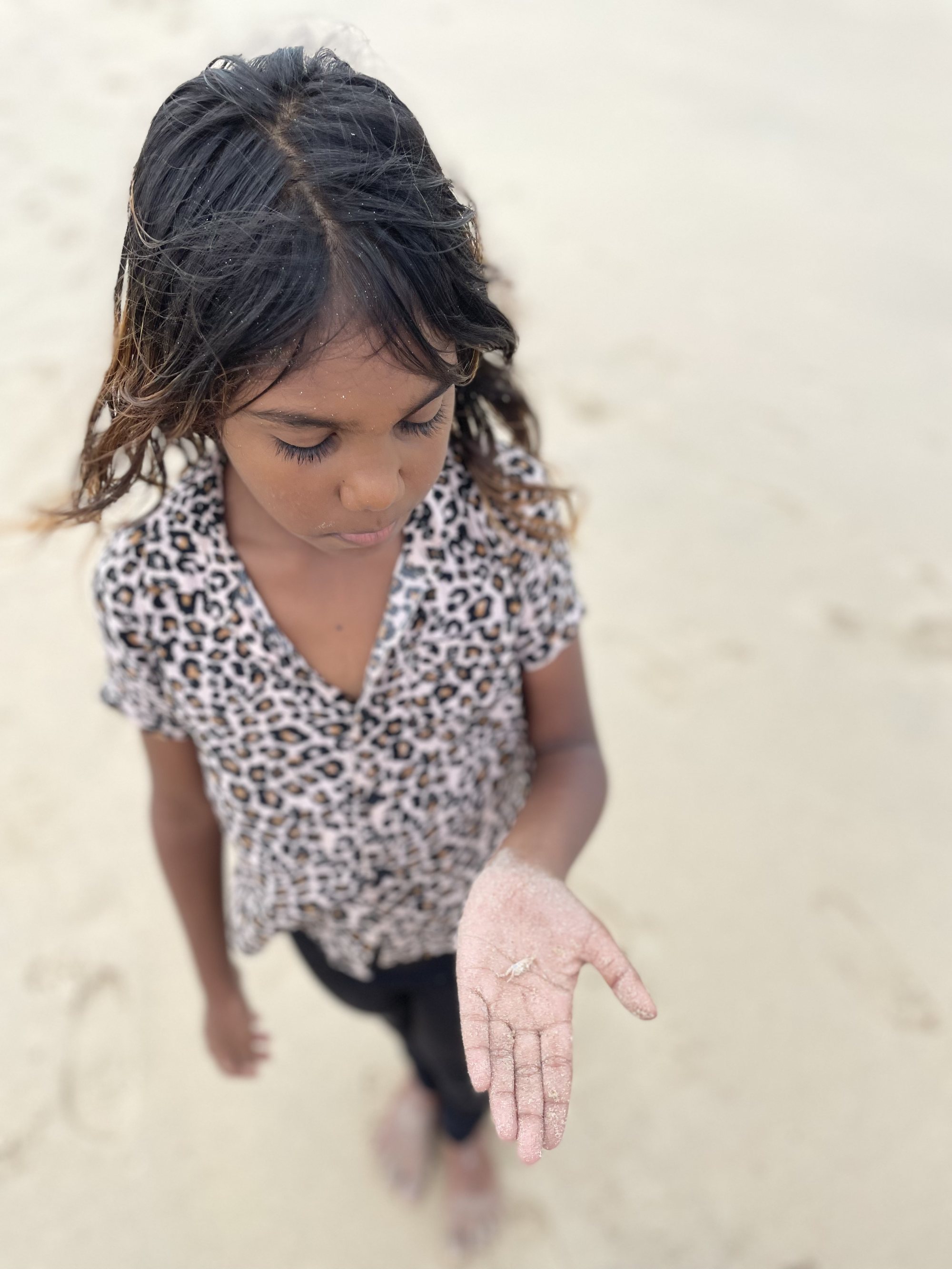
Day 4
Maiden, mother, wild woman, wise woman – the female archetypes are all represented on this tour and we are learning from one another as well as the Yolngu. Today is about talking, as Charmaine teaches us her tribal language, one of five that she speaks. In an hour, we learn enough words so that we may chat in the street with a member of the Yolngu.
Charmaine has brought her eight-year-old daughter, Bella, into our group and they drop pearls of wisdom into the conversation like coconuts from a tree. As stories are shared, trust is gained. Charmaine allows us to ask her questions and because we are not in the presence of a man, she can share her answers with us white people (balanda).
Yolngu women wear skirts only when they start menstruating, she says, and polygyny is still practised widely in these lands. When a female comes of age, she can be promised to an older uncle based on her moiety and, in the event a teenage girl becomes pregnant, all the women in the family must raise the baby collectively.
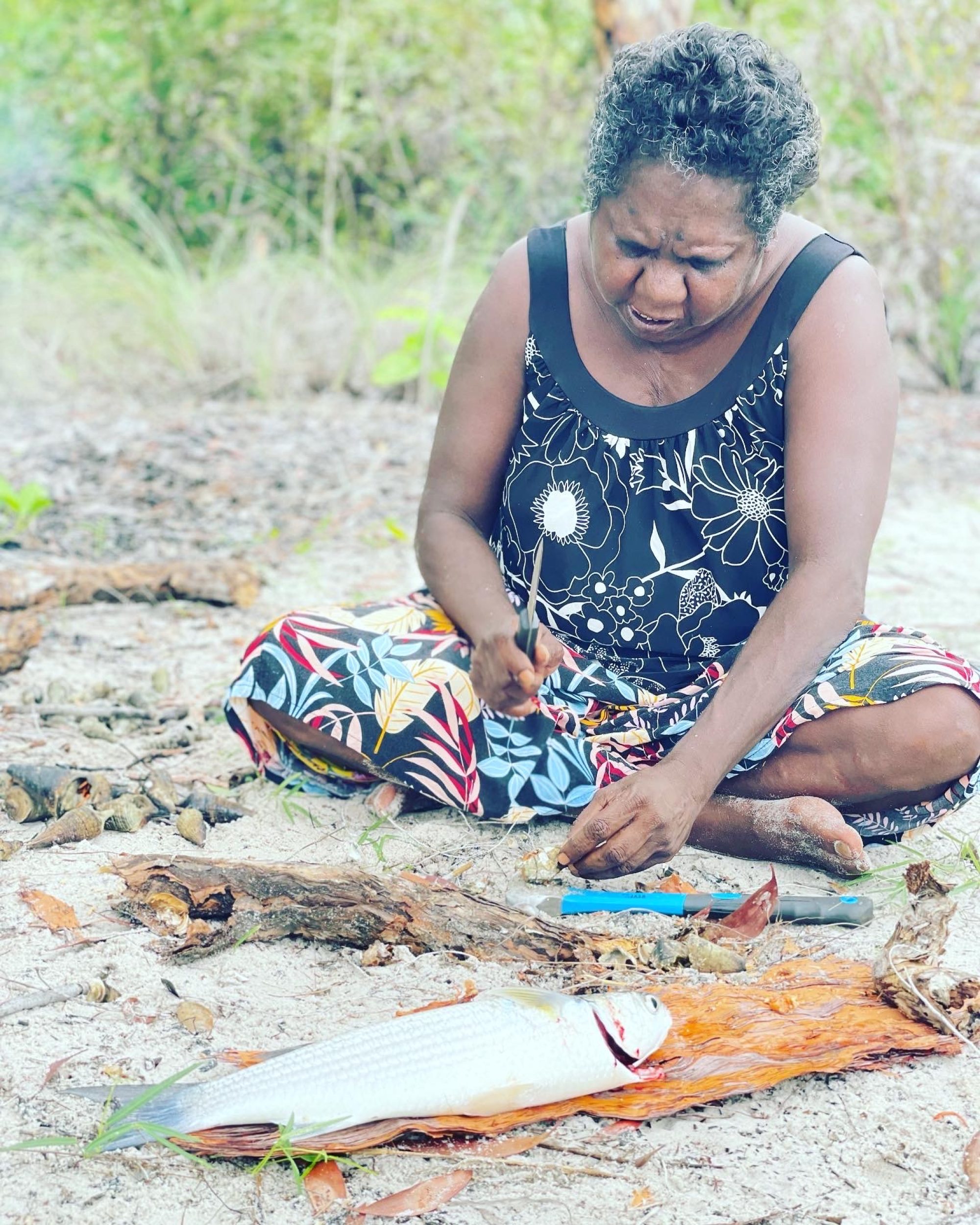
Yolngu women often die young, says Charmaine, due to health complications and hard lives, and are lucky to see their 50th year. But death is celebrated, and the funeral rites can last a day or up to three months; what matters is that the whole lineage says their goodbyes and is able to move forward.
On our final night we watch the sunset from East Woody Beach and I find myself thinking how lucky we are to have this time with this Yolngu family. I find myself looking over my shoulder for those pesky crocs but, surrounded by these women, everything seems fine.
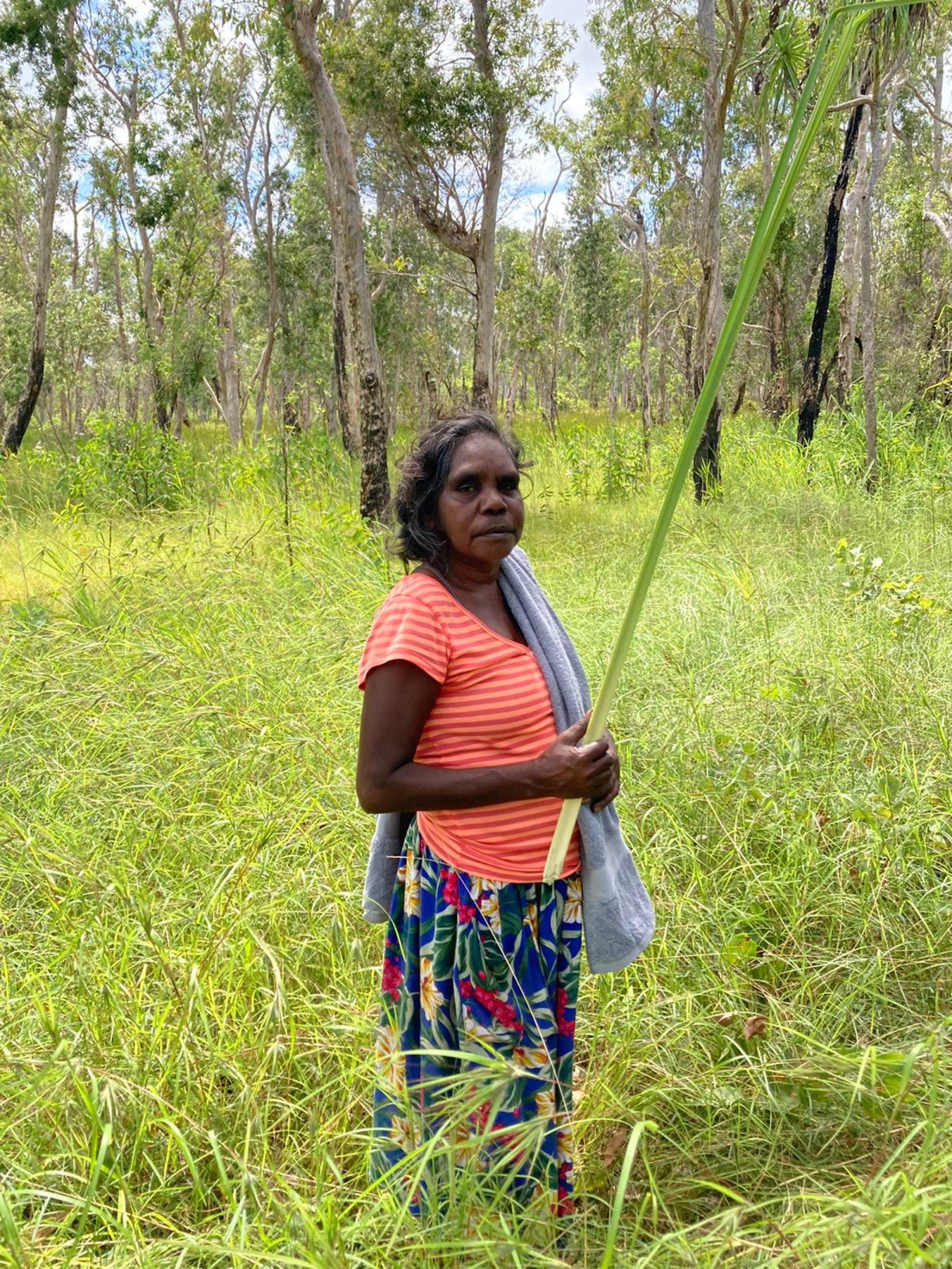
Final day
As we’re dropped back at Gove Airport, I realise that rarely did we drive past a member of the Yolngu who didn’t wave, smile or shout out in greeting.
It may seem to the outside world that the Yolngu women lead a simple existence, finding whatever they need in the bush, but they must delicately navigate a traditional life according to a complex family code while also integrating into Western society to earn money for their family. They are related to all living things but they must share their land – their mother – with a mining giant that wants it only for its aluminium and bauxite.
Our group felt relaxed and easy in one another’s company after five days traipsing lightly around East Arnhem Land together. Having been welcomed by Noella’s extended family, I was reminded of someone I used to know; someone connected to Australia.
In that red earth mining town, alongside my adopted Yolngu tribe, I discovered that part of me again.
Rebecca Foreman was a guest of Lirrwi Tourism, Tourism NT and TFE Hotels.

